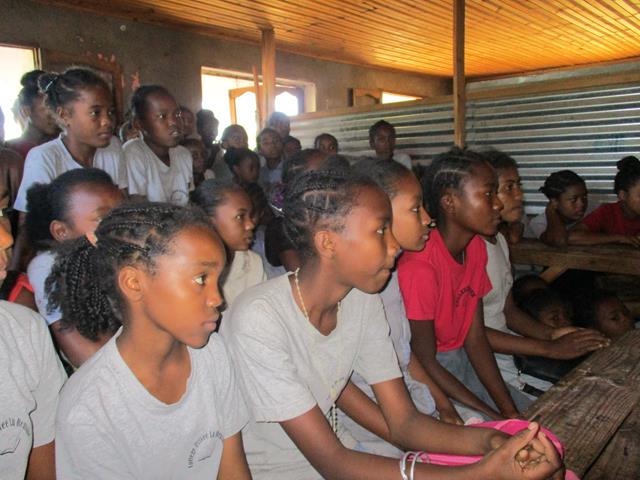How is literacy growing? The Diocese of Toliara is located in southern Madagascar, the poorest area on the island. On the island, one in three adults is illiterate. Approximately 40% of all adult women are illiterate. However, this is changing rapidly. About 40% of the population is children ages 0 to 14 years old. Currently for ages 15 to 24 the youth literacy rate for males is 80%. For young women the literacy rate is 72%. These figures vary significantly especially between regions and rural and urban areas. Adult literacy is defined as the ability to read and write with understanding a short simple statement about everyday life.
How does the education system work?

Education in Madagascar is compulsory for children ages 6 to 14 in those areas that have a school. Often there are no schools or one 3 classroom school for a rural area with hundreds of children.
There is a three-tier system: Primary school is a five year program for children ages 5 to 11. Lessons are taught in Malagasy and French. The last year children must pass the National Exam called CEPE in order to enter Secondary School.
Secondary school has two parts: Junior level is a four-year program for students ages 12 to 15. Students must pass a National Exam called BEPC and receive a certificate to proceed to the next level of education.
The senior level of secondary school is a three-year program for students ages 16 to 18. Upon completion of this program, students must pass the last National Exam to receive the baccalaureate and qualify to go on to the University. Classes are taught in French.
Do many students complete their education? The reality is that during the course of their education, many children have to drop out of school because the family does not have the money for school fees and supplies or they have to help with daily life such as carrying water or helping raise animals or growing food. So, classes are filled with children and youth of various ages in each level of education. For example, in secondary school it is common to find young people between 15 and 22 years old completing their junior level or secondary level.
How long is the school day?

It’s a long day! A typical school schedule is Monday through Friday with Wednesday afternoon off. Classes are not held on Saturday or Sunday. Children are expected to be in class from 6:30 am to 12 noon and 2 pm to 5 or 6 pm.
Children leave their homes around 6 am to get to school. Usually, they walk together for what may be several miles. Older children may ride a bicycle if they have one.
When they arrive, the first thing they do is copy their lessons for the day into their copy book. The teacher has already been at school to put the day’s materials on the board. This is for all ages. THERE ARE NO BOOKS IN MOST SCHOOLS IN MADAGASCAR – FOR ANY SCHOOL LEVEL, all teaching is by lecture and memorization.
Children go home for lunch around 12 noon and return to school at 2 pm. In primary school they leave for home around 4 or 5 in the afternoon. Those in junior and senior secondary school generally leave school around 6 pm and get home around 6:30 or 7 pm. Even though they get home at that hour, they have household chores and homework to do before going to bed.
Click here to find out how to sponsor a child in private school.
Click here to find out how to provide supplies to enable children to attend government schools.